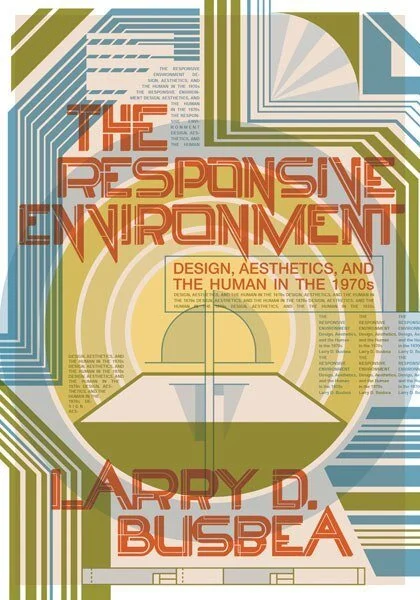Book review: The Responsive Environment
Larry Busbea’s The Responsive Environment: Design, Aesthetics, and the Human in the 1970s is a serious and creative attempt to link twentieth-century architectural landscapes with object–oriented ontology and aesthetics theory. An associate professor of art history at the University of Arizona, Tucson, Busbea’s research focuses on the interactions of design, art, and critical theory.
The book is divided into six chapters which delve into theories of environmental response across multiple disciplines, and what would come to be known as “responsive environments”—the design of architecture and interfaces. In Busbea’s opinion, the architectural thinking in the years between the 1960s and 1970s has not been given much critical attention, and this book is his way of lingering over the repressed qualities of the decade to consider their temporal and spatial ramifications.
Each chapter introduces several key figures—philosophers, architects, engineers, scientists—and Busbea discusses their theoretical ideas and how they relate to each chapter. Often the author makes references across chapters, comparing, contrasting, and building upon opinions and theories to provide the reader with a holistic view of overlapping themes during this decade. For example, comparisons between ideas formed in postwar Europe to those in the United States are common.
These theories dismantle dualities such as mind–matter, form–content, and object–subject as they relate to context, space, pattern, perception, intermedia, cybernetics, and computation (among many). Key figures include, but are not limited to, Christopher Alexander, Gregory Bateson, Serge Boutourline, Warren Brodey, Mildred Reed Hall and Edward T. Hall, Wolf Hilbertz, Erich Jantsch, Frederick Kiesler, Marshall McLuhan, Nicholas Negroponte, and Paolo Soleri. A consideration for diversity and inclusion would have been appreciated in this selection.
Written in a high level of English in classic academic style, often it is challenging to follow the author’s train of thought, granted, he keeps his personal opinions clear by interjecting the occasional passage in the first person.
The book is indexed with a coloured plate section midway through. The rest of the book is illustrated with engaging black and white figures which animate the text, providing consistent visual references throughout. Busbea’s use of endnotes is extensive. Located at the end of the book, the endnotes provide references to direct quotations, personal anecdotes of the author, and helpful recommendations for further reading on specific ideas.
The Responsive Environment: Design, Aesthetics, and the Human in the 1970s would make a good addition to an art, design, or philosophy library. It is recommended for graduate level scholars in the fields of design history, critical theory, ontology, and metaphysics.
Published as part of ARLIS/NA (Art Libraries Society of North America) Reviews, January 2021.
Written by Larry D. Busbea. University of Minnesota Press, January 2020. 312 p. ill. ISBN 9781517907105 (pbk.)

